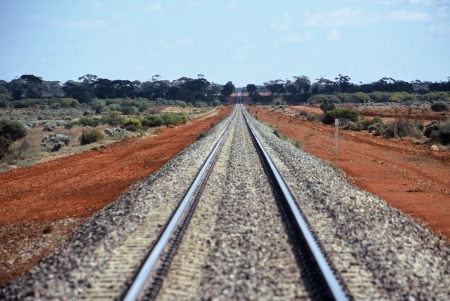
A privately-funded rail freight bypass of outer western Sydney is opposed by the NSW and Australian governments.
Operating between Glenfield and Newcastle, the bypass line is commercially viable when used for railing containers between a container terminal at Newcastle and an intermodal terminal at Eastern Creek. Container trucks would be removed from Sydney’s roads.
But both governments oppose a container terminal at Newcastle. A condition of the lease to the Port of Newcastle currently being sold by the NSW Government is that there will be no container terminal.
A bypass line would remove the need to increase Sydney’s rail freight capacity, which is adequate until 2028. The Australian Government is considering a $4 billion request from the NSW Government to fund the capacity increase. The best economic use of Sydney’s limited rail infrastructure is more passengers, not more freight.
The Australian Government is waiting for the Port of Newcastle lease to be sold, at a price expected to be around $1 billion, before announcing that no funds are available for the $4 billion upgrade. Both governments support maintaining the Port Botany monopoly over container movements in NSW.
In 1997, BHP demonstrated that a container terminal on its soon-to-be-vacated Newcastle steelworks site was commercially viable by servicing the northern NSW economy. The state government took ownership of the site in 2001 in order to prevent a container terminal. The state was aware that Port Botany’s commercial viability would be challenged by a Newcastle container terminal generating the base-load freight to pay for a rail freight bypass of Sydney.
The $4 billion rail freight upgrade is required to service the Australian Government’s proposed intermodal terminal at Moorebank. The government is waiting for the Moorebank project to be privatised before announcing that there are no funds available for the upgrade.
An intermodal terminal at Moorebank will require all available rail capacity between Port Botany and western Sydney. This rail capacity is insufficient for handling the current volume of container movements through Port Botany, let alone growth. Both governments support increasing the number of container trucks on Sydney’s roads.
Allocating rail capacity to Moorebank would leave no rail capacity available to service Eastern Creek. This rail capacity would be required for Eastern Creek until the bypass line was built to Newcastle. The government intention is to prevent an intermodal terminal at Eastern Creek replacing one at Moorebank.
An Eastern Creek intermodal terminal would have unlimited container handling capacity and goods warehousing. Goods, but not the container, would be trucked to the end destination. There would be a strong financial incentive for firms, which currently occupy 5500 hectares of land in inner western Sydney, to re-locate to outer western Sydney and take advantage of better serviced land, lower transport costs and new factories built using the capital gain from selling existing sites for residential development.
Railing containers between Newcastle and Eastern Creek would make Port Botany container terminal redundant. A potential use of the site is for expanding Sydney Airport.
The parallel runway can be extended and a second cross runway can be built into the container terminal site. Modern aircraft are fuel efficient and quiet but they require 4,000 metre-long runways.
Expanding Sydney Airport runway capacity will reduce noise and increase passenger capacity. A new cross runway will alleviate the major bottleneck that occurs when wind conditions prevent the parallel runways being used. Airport traffic congestion would ease by integrating the container terminal site into the road and passenger rail networks. The Australian and NSW governments, however, oppose improving Sydney Airport by increasing runway capacity.
Removing freight from Sydney’s rail network would allow all capacity to be used for passenger services. The North-West Link would be able to access the CBD using the freight line between Epping, Strathfield and White Bay. The rail freight line between Port Botany and Glenfield would instead provide a passenger service to Badgery’s Creek, should Sydney’s second airport be built there. The Australian and NSW governments, however, oppose increasing rail passenger capacity by removing freight from the network.
NSW Ports consortium, which purchased leases to Port Botany and Port Kembla, makes its money from the movement of containers through the port. The location of the container terminal is irrelevant. A rail freight bypass from Newcastle, with its monopoly over container movements, is an enhanced investment. The Port of Newcastle can be leased, minus the container terminal site (the state government acquired the site from BHP for nothing), which can be made available to NSW Ports. A good-faith negotiation would enable NSW Ports and the NSW and Australian governments to reach an accommodation acceptable to the people of NSW.
After the Port of Newcastle is leased, and the Moorebank intermodal terminal is committed, expect the Australian Government to decline the NSW Government’s $4 billion infrastructure funding request. (22)





